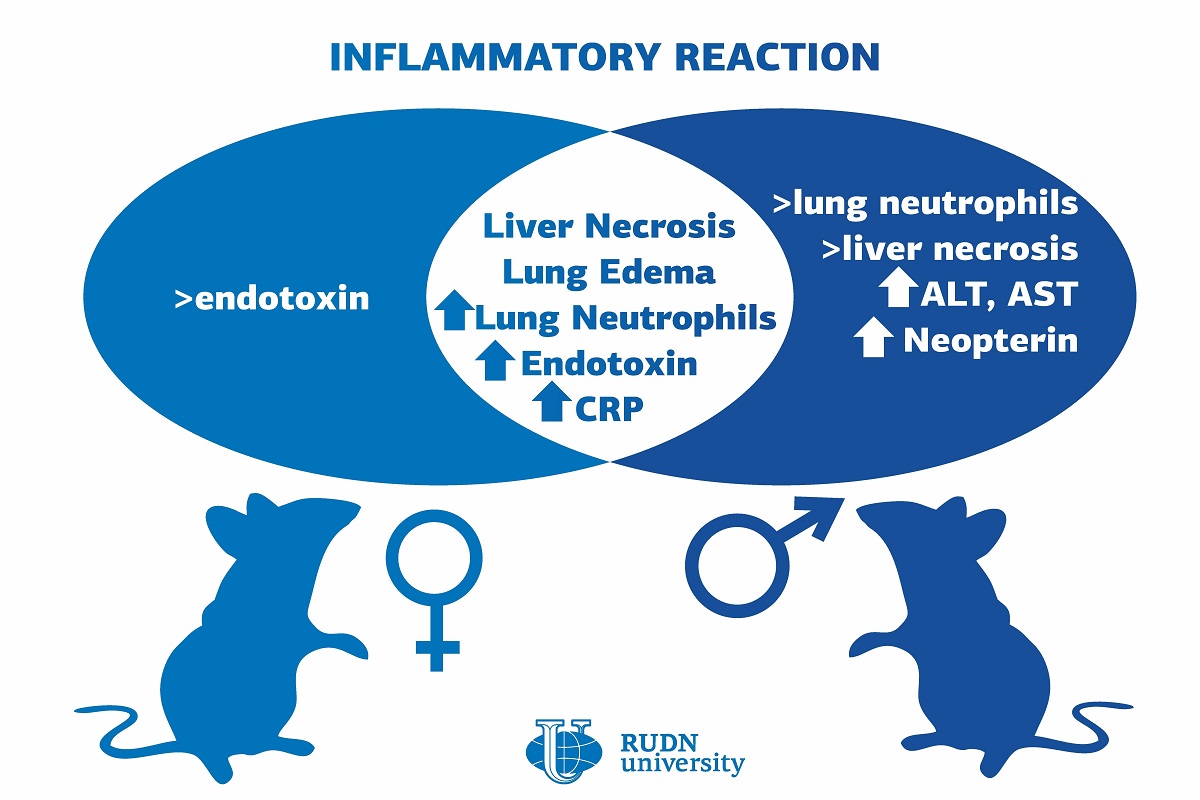A Biologist from RUDN University Found Sex Differences in Inflammatory Reactions in Rat Pups
The amount of sex hormones in an animal’s body changes during its life along with the state of its immune system. The correlation between these two processes hasn’t been fully understood yet. It is yet unknown how sex hormones affect the immune systems of animals in the prepubertal period (in humans, this term refers to the age from 6-7 to 11-12 years). A biologist from RUDN University was the first to describe the differences in the immune response in prepubertal male and female rats. The results of the study can help find more effective treatment methods for children’s diseases and increase the safety of vaccines.
“Understanding the peculiarities of the immune response in prepubertal animals can lead to the development of more effective immunotherapeutic approaches and help minimize the side effects of vaccination in children. That is why we decided to focus on the sex differences in the inflammatory response in prepubertal rats,” said Anna Kosyreva, a Ph.D. in Biology, and an Assistant Professor at the Department of Histology, Cytology, and Embryology, RUDN University.
The team used 51 10-day-old rats (21 females and 30 males) in their experiment. 35 of them (12 females and 23 males) were injected with lipopolysaccharide (LPS), a toxic structural component of bacterial cell walls, to imitate septic shock—a common complication of severe infectious diseases. The administered dose (15 mg per one kg of weight) is deadly for adult animals but in the pups, the mortality rate amounted to 17% (2 out of 12) in females and 56% (13 out of 23) for males. 24 hours after the injection the team conducted a histological analysis of the lungs, livers, and thymuses of the survivors as well as the pups from the control group that hadn’t received an injection. Before and after the injection the biologists measured the levels of the sex hormones estradiol and testosterone, as well as corticosteroids (hormones produced only by the adrenal cortex, not the genital glands) in all animals.
According to the team, the sex differences in the immune response to LPS in female and male rats did not depend on sex hormones. However, the progress of the inflammation in males was more severe: the area of liver necrosis in them was seven times larger than in females. Almost all injected pups developed pulmonary edema, but the number of neutrophils (inflammation-targeting cells) in males was 1.5 times higher. This more active inflammatory reaction is likely to be the cause of higher mortality among male rats. This difference could not have been explained by sex hormones. Therefore, the team assumed that the X chromosome could be the case.
The X chromosome contains immune response genes, including the regulators of NF-κB—a factor in charge of the synthesis of inflammation mediators. Females have two X chromosomes, one from each parent. If the genes responsible for NF-κB turn out to be dominant in one of the chromosomes, it takes over the other, and the dominant genes start to determine the production of inflammation mediators. In such a case, an animal has more chances to effectively fight infections. However, the males don’t have this advantage because they only have one X chromosome with a single group of immune response genes.
The results of the study were published in the Scientific Reports journal.
Sergey Ivanov, a scholar from St. Petersburg, has been named the first winner of RUDN University’s International Prize for Scientific Achievements in Mathematics, worth 5 million rubles.
Products derived from microalgae represent a cutting-edge development in the field of bioeconomy. The potential of this biological resource was discussed at the international research seminar “Foundations for a Green Sustainable Energy”, part of the BRICS Network University’s thematic group on “Energy”. The event was organized by the Institute of Ecology at RUDN University.
Ambassadors of Russian education and science met at a conference in RUDN University to discuss how they can increase the visibility of Russian universities and research organizations in the world, and attract more international students in Russia.
